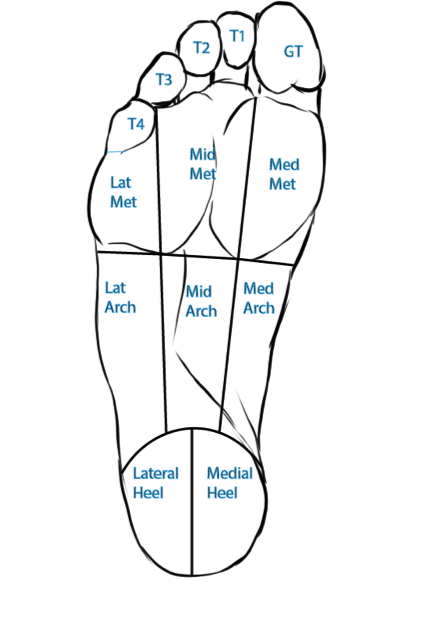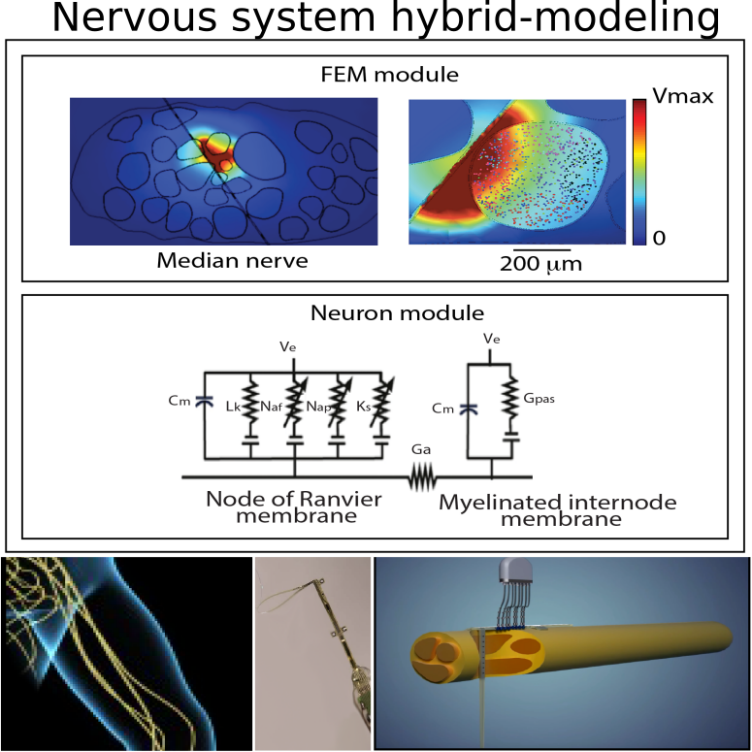Computation Modeling of Nervous System
Neuroprostheses based on electrical stimulation are becoming a therapeutic reality, dramatically improving the life of disabled people. They are based on neural interfaces that are designed to create an intimate contact with neural cells. Our research is based on creating models of nervous system in order to define the most appropriate design of customized neuroprostheses, their optimal modality of use, understanding the effects that occur during their use, and minimizing animal and human experimentation.
Subprojects:
Mechano - neuronal model

Thousands of mechanoreceptors of different types are distributed across the skin, each innervated by one or more large myelinated nerve fibers. During our exploration using hand or foot, fibers are generating specific spike responses, which carry information about position, size, and shape of the object we touched or stepped onto.
Mechanoreceptors-neuro model will be constructed to emulate the nerve activity corresponding to the set of sensory stimuli over heel, toe and other foot areas, involved in standing and walking, similarly as it was done for the hand. It will transform the mechanical deformations of mechanoreceptors into trains of spikes within the nerve fascicles: compartmental models of neurons will emulate the activity evoked by mechanical stimuli of main types of afferent fibers that innervate the foot. This model will be able to simulate the spiking activity of axonal population respect to the different foot sensations, which are connected to walking.
Electro - neuronal model

This project is focused on constructing hybrid electro-neuronal model to estimate the population of fibers triggered with a specific current. It accounts for both the anisotropic extracellular conductivity of real nerves, calculating voltages induced by electrical stimuli injected through an electrode into the anisotropic medium, and for the dynamic response of neuronal cells and axons to the extracellular electrical stimulation. An innovative detailed anatomically and biophysically plausible model of the sciatic nerve will be created.
Different policies of current injections from the electrode to the nerve, corresponding to different encoding strategies (amplitude modulation, pulsewidth modulation, ratemodulation, multipolar stimulation, and their combinations) will be implemented in the EN, and the resulting axonal population activity computed.